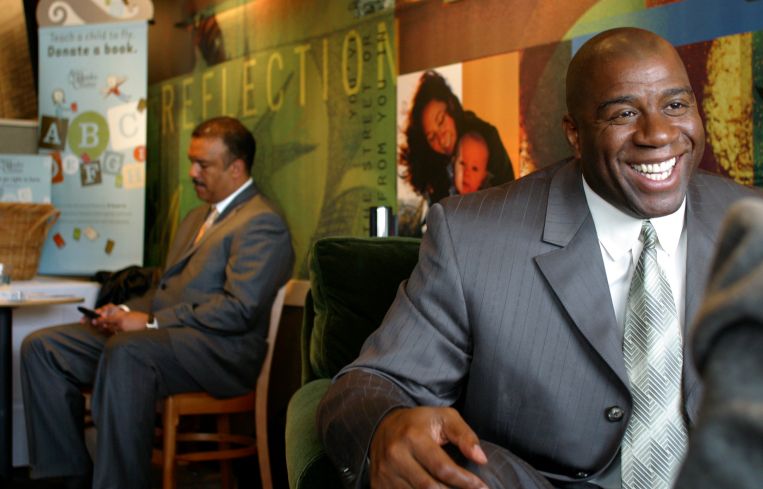How to Use DEI to Solve Challenges in Commercial Real Estate
By G. Lamont Blackstone April 22, 2024 10:00 am
reprints
Diversity has become controversial. But diversity is more than just identity diversity — a person’s race, ethnicity, gender, etc. It’s also embracing different perspectives in the conduct of American capitalism, and that includes decision-making regarding real estate markets.
It was a different way of thinking about retail real estate that led NBA legend Earvin “Magic” Johnson and his associates to envision an upscale coffee chain in multi-ethnic markets. That was back in the early 2000s. And that divergent perspective led to Starbucks and Johnson partnering to open some 100 outlets in urban neighborhoods nationwide.
One of those neighborhoods housed the City Heights Retail Village in San Diego. At that time, City Heights was a poster child for ethnic diversity: Within a one-mile radius, the population was 34 percent Hispanic, 23 percent Asian, and 20 percent Black. Since the area was considered blighted, however, it was not a likely candidate for many site selection metrics. Nonetheless, Johnson’s team saw a neighborhood poised for revitalization. Thus, he and Starbucks launched San Diego’s first drive-through Starbucks, located in a development that I helped to capitalize.

Johnson’s team was exposed to the same locational realities as any other retail real estate professionals. But evidently, his own identity background led him to a different predictive model of the site’s promise. Analogous to how AM (amplitude modulation) and FM (frequency modulation) radio transmissions work, our identity diversity serves as something akin to a carrier wave for transmitting the essential value of diversity. That’s a resource for the problem-solving and predictive tasks which encompass much of real estate.
To demystify this analogy, the little that I retained from a high school electronics class supports this comparison. When inspected, it challenges the DEI controversy currently raging in society — and potentially infiltrating into management in the CRE sector. In telecommunications, carrier waves serve as conveyors for the broadcast of messages and music. These are the transmissions that we receive from radio stations. The valued message or content is the input signal that takes a “piggy-back ride” on the carrier wave.
But here’s the reality: There is no meaningful value — that is, for a particular task — in a carrier wave alone. It’s nothing more than an empty electromagnetic cargo ship. It can travel long distances, but that is of little consequence if it isn’t loaded with anything (e.g., basic intelligence). Yet, valued content isn’t delivered without the agency of the carrier wave. The two are intertwined.
The same can be said about corporate diversity. While cognitive diversity such as differences in how we think is what really powers predictive tasks such as site selection and risk assessments, our identity diversity shapes and carries that cognition. You don’t get the latter without the former. Thus, cognitive diversity is often correlated with identity diversity. So, we should consider the ramifications of this dichotomy.
Unfortunately, there is a fallacious strain of thinking being popularized on social media and cable news. It would have the nation believe that diversity’s only premise is social justice. As part of society, the commercial real estate community is susceptible to the growth of such perspectives. DEI roles at CRE organizations may be subject to the chopping block or diminishment. Or C-suite discussions may avoid any invocation of those three letters. At its most ludicrous, we are witnessing a hysteria making that acronym responsible for every threat imaginable, ranging from the insecurity of school kids to the Baltimore bridge collapse tragedy.
DEI, indeed, can have repercussions for the built environment, but causing bridge catastrophes is not one of them. Of course, the worst fallacious thinking is to assume that a person’s identity is inherently a carrier for inferior capability. Such thinking belongs to an obsolete, antebellum era — a time when there were no radio transmissions.
So, CRE leaders can choose to modulate the signals they send about DEI. In other words, “Don’t throw the baby out with the bathwater.” DEI is neither the 21st-century Frankenstein of social decay nor the economic messiah of modern management. It’s a tool that must be fine-tuned, like radio broadcasts, to deliver win-win results.
Therefore, to optimize the potential of the future’s real estate markets, we should leverage the talent pool of all demographic cohorts of the nation. It’s also time to modulate the hysterical rhetoric transmitting through the ether.
G. Lamont Blackstone is a commercial real estate consultant and urban redevelopment specialist. He is also the acting executive director of Project REAP, a national organization that aims to diversify CRE’s talent pool.



